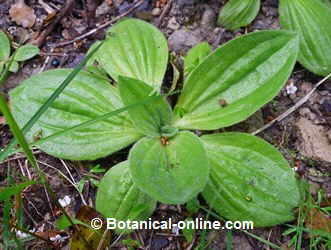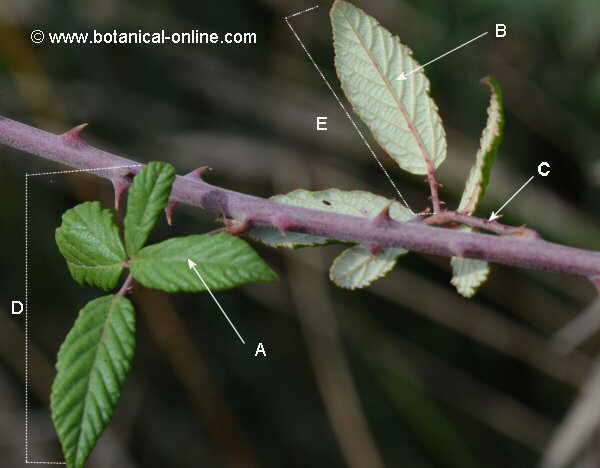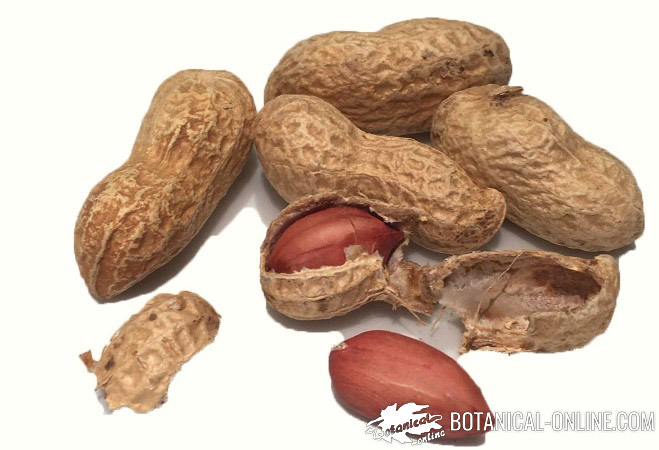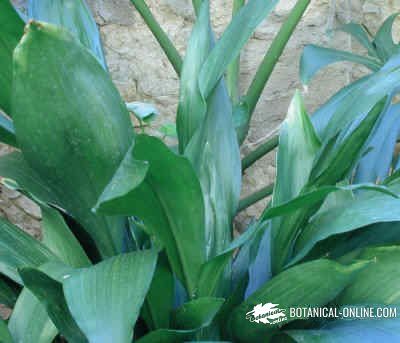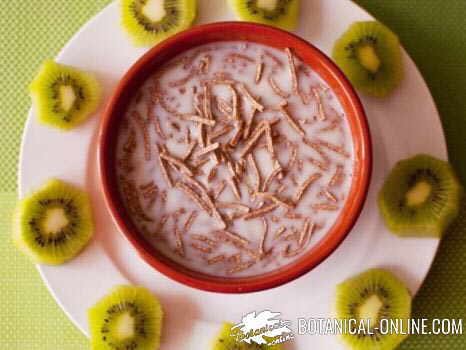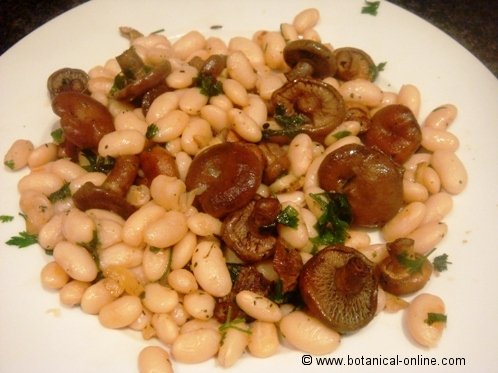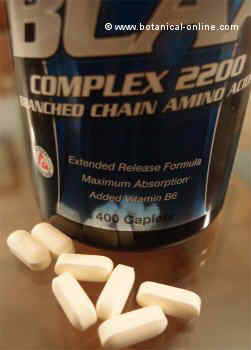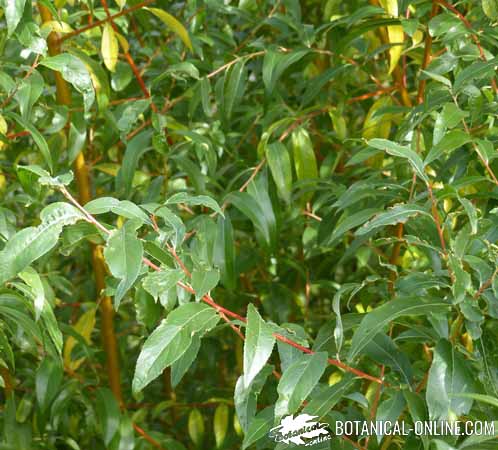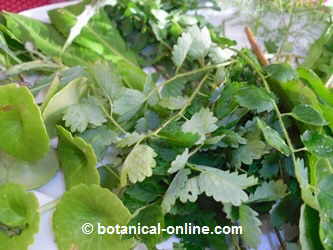Contents
CHARACTERISTICS OF MUCILAGE
What is mucilage?
Mucilage is a type of soluble fiber of viscous nature.
It is produced from the seeds of certain plants, such as carob bean, plantain, flax or mustard.
It also appears in fruits such as fig and it is very abundant in plants like borage or purslane, in vegetables like green beans or lichens, such as Iceland moss.
One of the plants with the highest quantity is agar-agar algae.
Functions of mucilage in the vegetable kingdom
Mucilages have different functions. Among the most important ones, we can point out:
- Protection of plant wounds. they create a gummy or gelatinous layer on wounds that can prevent microorganism to go into the plant tissues.
- Germination of seeds. Upon contact with water, they increase volume and maintain a layer of moisture around the seed that facilitates their germination.
- Seed dispersal (seed is hooked in disperser element) Some root mucilages used to promote the introduction of them into the ground. Comfrey is a clear example of how a component can produce this result. Sometimes these secretions are a weapon to catch prey, such as occurs with the mucilage secreted by the carnivorous plants.
Main plants high in mucilage
The main plants rich in mucilages are:
- Plants of the mallow family: The most prominent is the manihot (Abelmoschus manihot) belongs to the Malvaceae family and is similar to hibiscus. (In fact, it was previously thought to belong to the same genus).
Other plants of the same genus which are very rich in mucilages are Okra (Abelmoschus esculenta), very important edible species, and ambrette (Abelmoschus moschatus), used primarily in perfumery industry and as a demulcent and aphrodisiac medicinal plant. Other plants of the mallow family very rich in mucilage are marshmallow (Althaea officinalis) and mallow (Malva sylvestris) and hibiscus (Hibiscus sp.) especially guinea sorrel (Hibiscus sabdariffa)
Photo of plantain leaves. Plantains are very rich in mucilages
- Plantains: The family of Plantaginaceae to which belong such well known plants as plantain (Plantago lanceolata, Plantago ovata, Plantago major) or psyllium (Plantago psyllium)
- Highly recognized medicinal plants: Aloe (Aloe vera), arnica (Arnica montana), balsam fir (Abies balsamea) from which turpentine is obtained, basil (Ocimum basilicum), evening primrose (Oenothera biennis), nettles (Urtica dioica) or sage (Salvia sp.)
- Natural Foods: Celery (Apium graveolens), borage (Borago officinalis), potatoes (Solanum tuberosum), lemons of the lemon tree (Citrus lemon), quinces (Cydonia oblong), figs from the fig tree (Ficus carica), parsley (Petroselinum crispum), or almonds from the almond tree (Prunus dulcis)
MEDICINAL PROPERTIES OF MUCILAGE
Benefits of mucilage in internal use
- Anti cholesterol: The soluble fiber aids to lower cholesterol in blood. This type of fiber prevents the intestinal absorption of cholesterol produced by the bile for the digestion of food. Soluble fiber forms a gel which traps that cholesterol that is expelled to the outside without passing into the bloodstream. The liver, that needs the cholesterol to form fatty acids, needs to take it from the blood which produces its diminution. The reduction of the level of the cholesterol supposes a reduction of the risk of suffering vascular accidents.
- Anti constipation: Constipation is caused by retention of stool in the intestine. The insoluble fiber intake helps to increase stool what causes increased peristalsis (bowel movements) to expel the stool outside. Moreover, without the presence of soluble fiber, stool consistency is often too hard, making their expulsion difficult. The intake of foods rich in soluble fiber help soften stool and facilitate their elimination through defecation. Eating foods rich in both types of fiber is the most positive way to avoid constipation.
- Anti decomposition: When regulating peristalsis, Fiber helps to prevent the appearance of intestinal decompositions, produced by the action of the pathogenic bacteria on lees. When these residues stay for a long time in the intestine it is more likely for the non beneficial bacteria to develop in greater amount, which produces intestinal rottings and entails belly pain, abdominal swelling, flatulence, etc. On the other hand, fiber helps the body’s beneficial bacteria to multiply and help neutralize harmful bacteria.
- Anticancer: Ingestion of foods high in fiber, contributes, as we have seen the expulsion of fecal waste in the intestine. However, through food, in addition to food principles, our body also gets a lot of toxins from the entire process of production and food preservation. These toxins may be responsible for the appearance of cancer cells.
- Anti diabetic agents: The ingestion of foods rich in fiber helps stabilize blood sugar levels in the blood, so fiber is suitable for feeding of patients with diabetes. Fiber slows the absorption of carbohydrates thus helping to reduce the typical and sudden sugar highs levels in the blood in people with diabetes.
- Stomachic: Mucilage has the ability to protect internal mucous membranes, so its use is appropriate for the treatment of irritations of the digestive system (gastritis, heartburn, indigestion, etc)
Benefits of mucilage applied on the skin
Used externally, mucilages have emollient properties, that is to say, they hydrate and protect the skin. For this reason they can be used to alleviate many affections of this organ: wounds, cracks, ulcers, pustules, cuts, burns, etc.
Precautions: Side effects of mucilage
High fiber intake requires drinking a lot of water so as to avoid problems of intestinal obstruction and to replace fluids consumed by the fiber.
The abundant use of fiber may prevent absorption of certain minerals or cause intestinal problems in sensitive individuals.
![]() More information on fiber.
More information on fiber.

